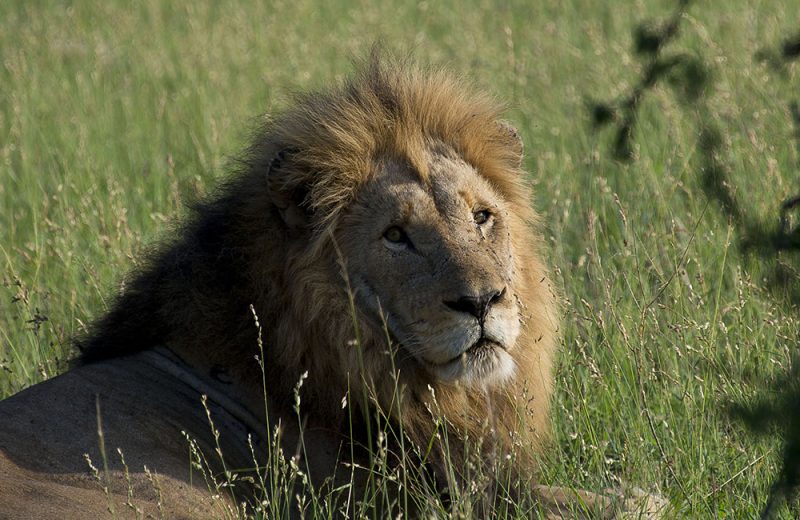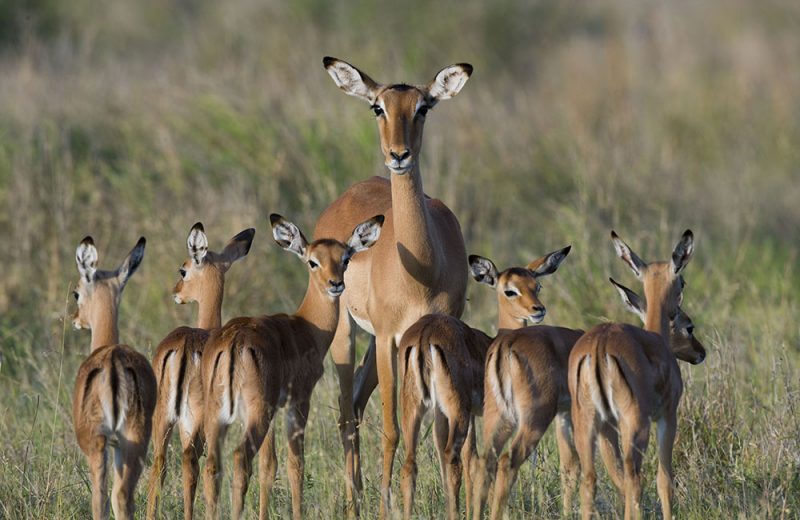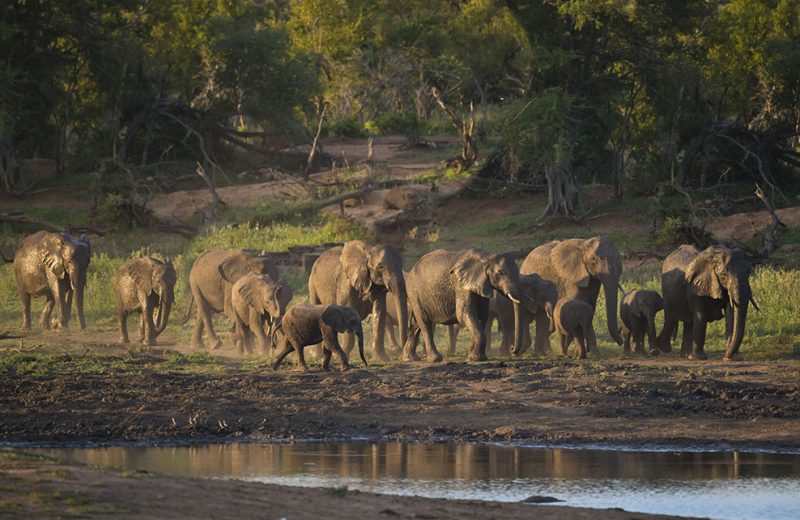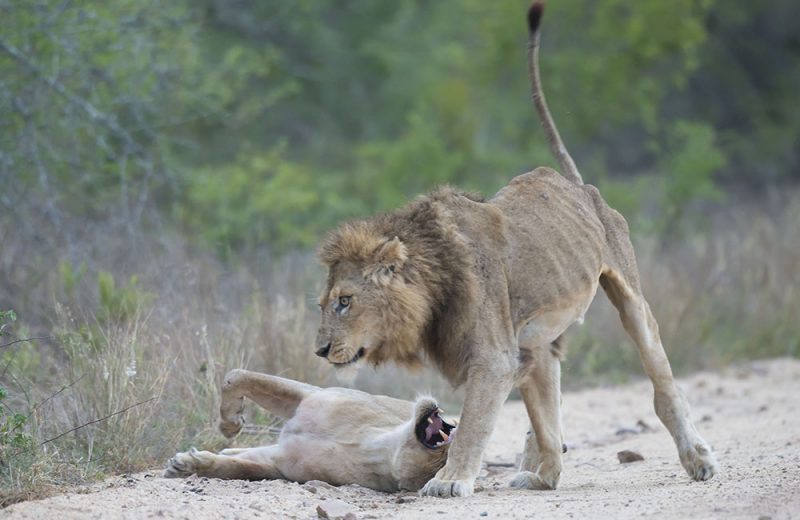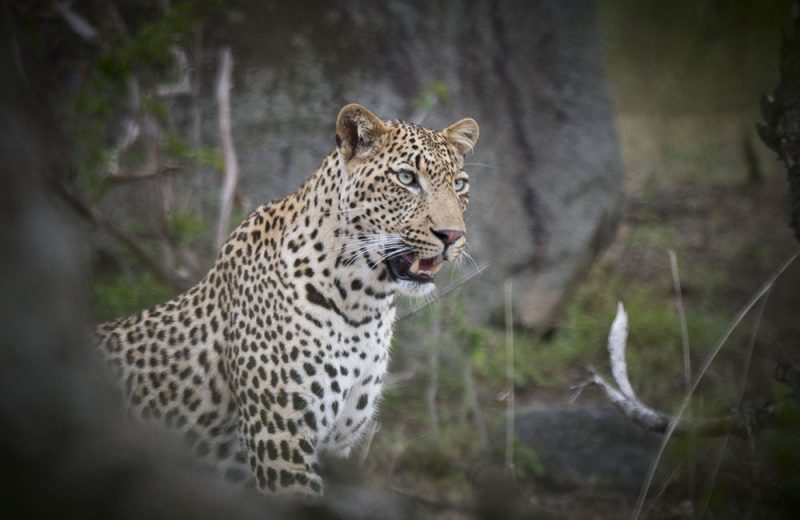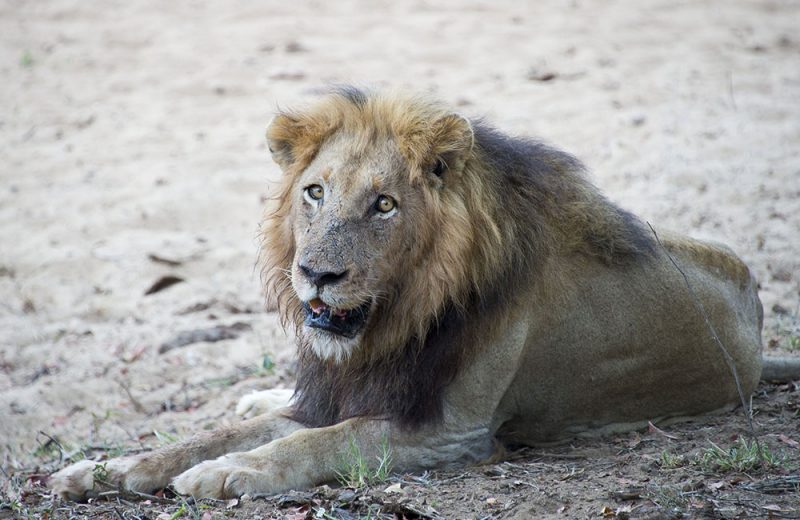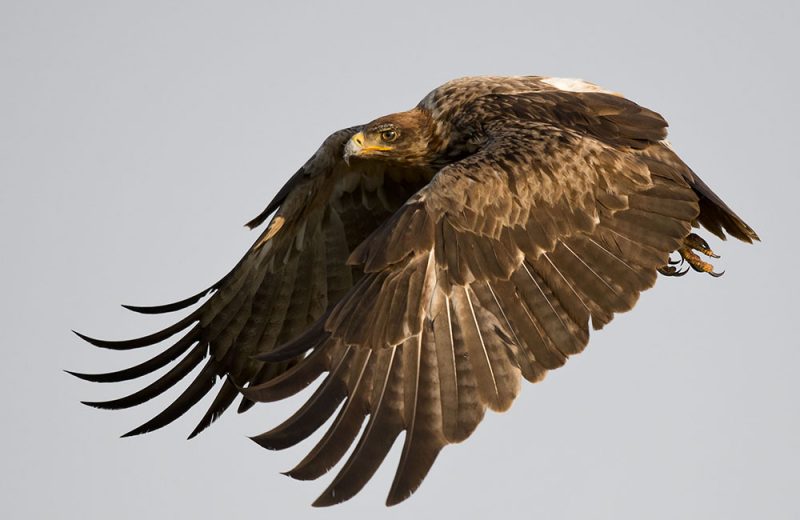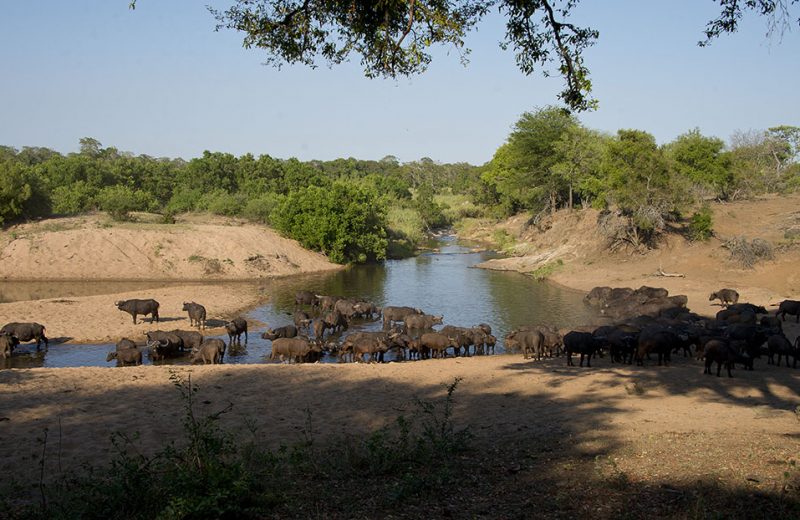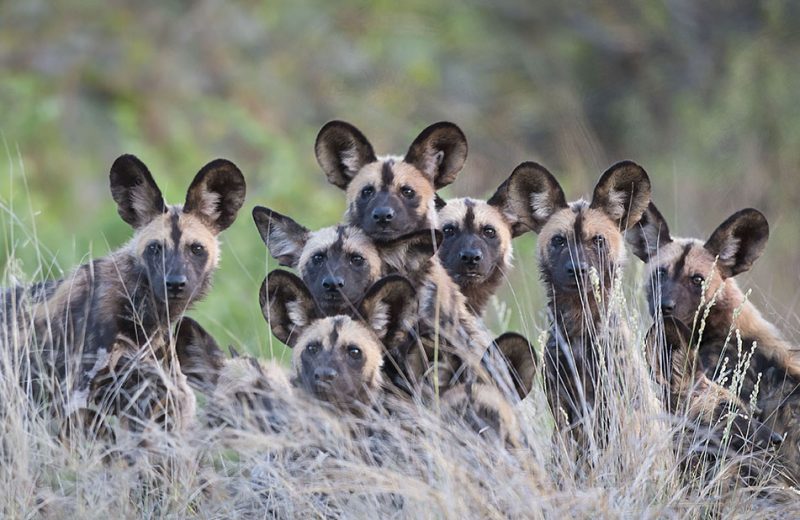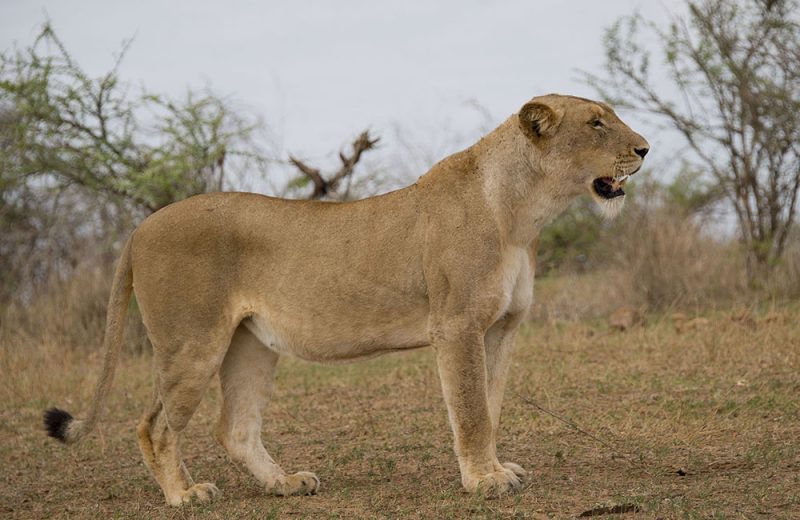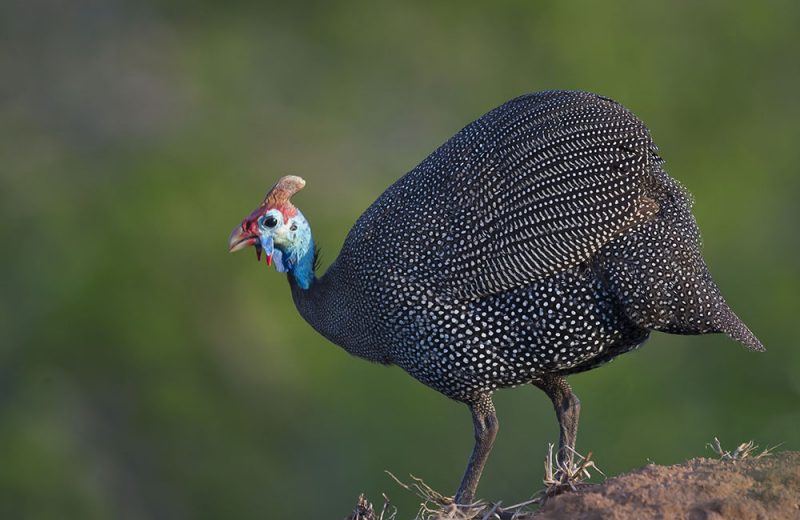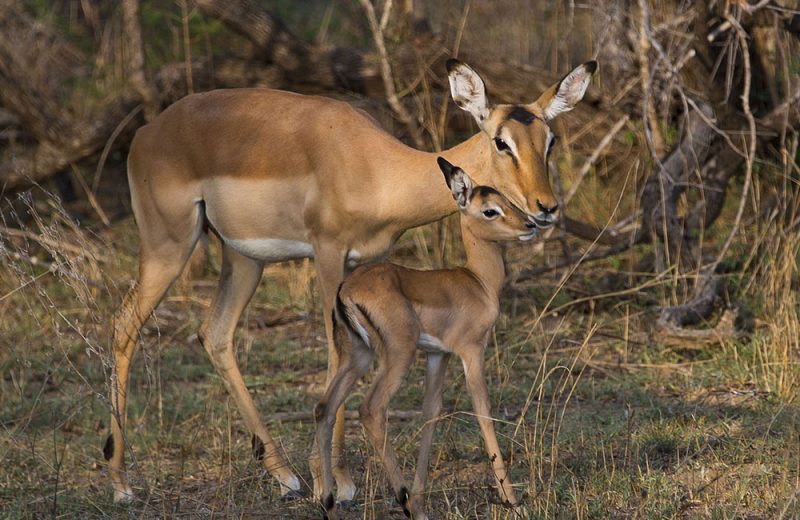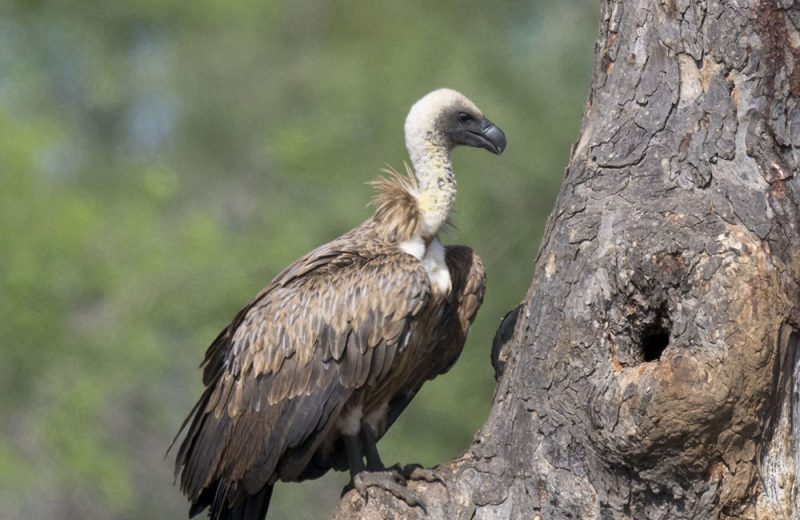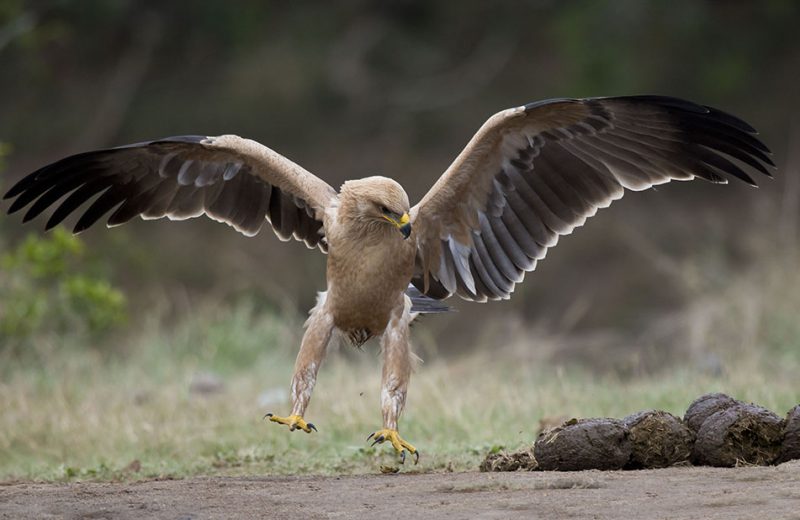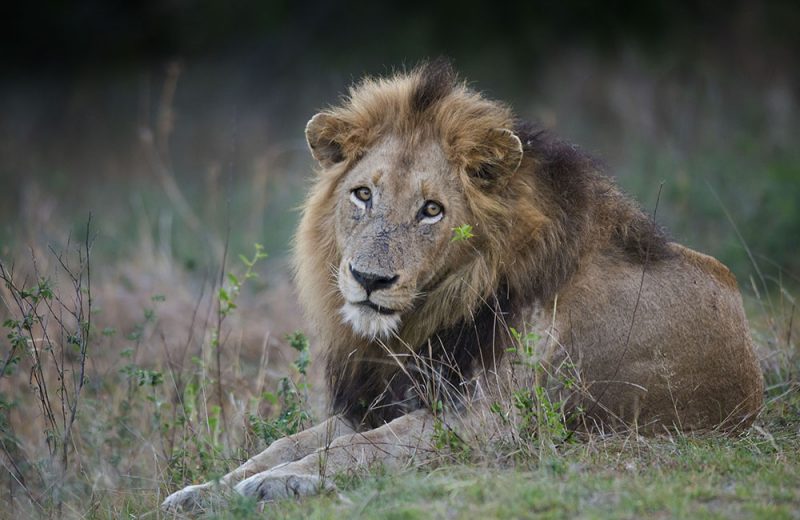Forecaster yr.no has it spot on as at 4am this morning the south wind starts blowing, thunder cracks and rain starts falling. But by 7am the weather calms, the rain stops and my rain gauge tells me that only 8mm has fallen.
We then go out northward up the H1-4 and after 7km’s turn east along the S90 towards Gudzani East. The veld is dry here and even less rain has fallen with the road quite dusty. The Mavumbyue pool, as ever, has a good amount of water in it and I can never remember it dry, even during the worst of droughts.. As we breakfast, the weather brightens and we decide to push on and do the circuit past Gudzani and then up the S100 Nwanetsi River road back to camp.
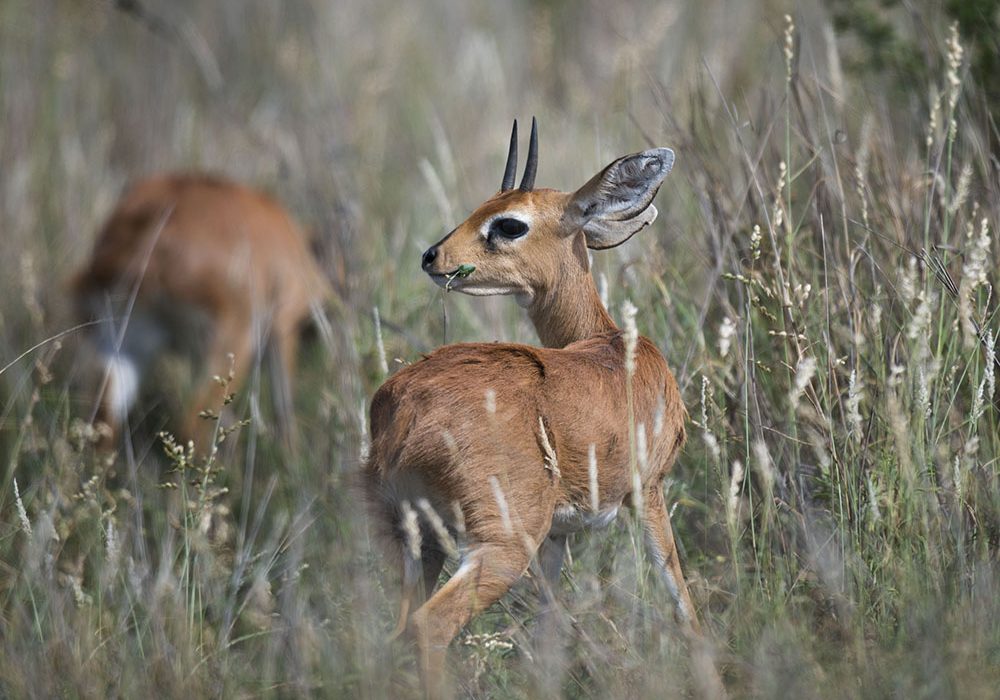
Down at Gudzani however, heavy rain has fallen earlier this morning and large pools of water lie at the side of the road and in the veld. So this morning’s thundery rain was quite patchy. And after seeing the dry Kumana and Mazithi Dams yesterday, it comes as quite a surprise to find Gudzani Dam with plenty of water in it. Plenty of waterbuck, giraffe, wildebeest, impala and zebra are to be seen and the prospects for the our next 10 days here look promising.

But today the wind is blowing hard from the south and the sky is grey and overcast. Rather unpleasant.
The S100 Nwanetsi River Road
With the cool weather and the wind having abated somewhat, I wander off down the S100 at 2pm. In my opinion , this is one of the great roads of Kruger. Along it one has a good chance of seeing anything. As one heads eastward downstream, the typical rich Satara grasslands stretch away to the north drawing large herds of game.

To the right the road skirts the river, lined by great trees and riverine bush. Lion, leopard, cheetah are commonly seen along the S100 and scenically it is just magnificent- the best of Kruger. Especially so in November when the traffic is light and one rarely comes across other vehicles. In the popular winter months, we tend to avoid this road because of congestion and dust.
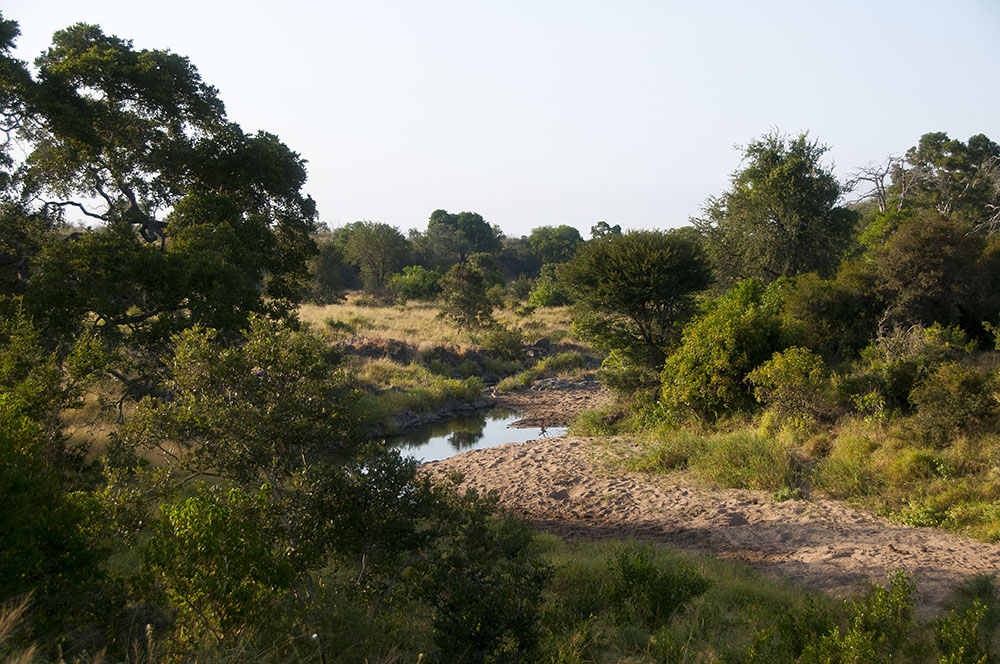
This afternoon I stay in first gear and idle at a steady 5kph down the 15km length of this road. I am particularly keen to find the migratory Grey Headed Kingfisher. Although I am not successful, I thoroughly enjoy myself wandering along this beautiful road taking in the birds, trees and animals. As to be expected the grass is short but there has been no burning and there is enough cover for francolins, guineafowls and small animal life.
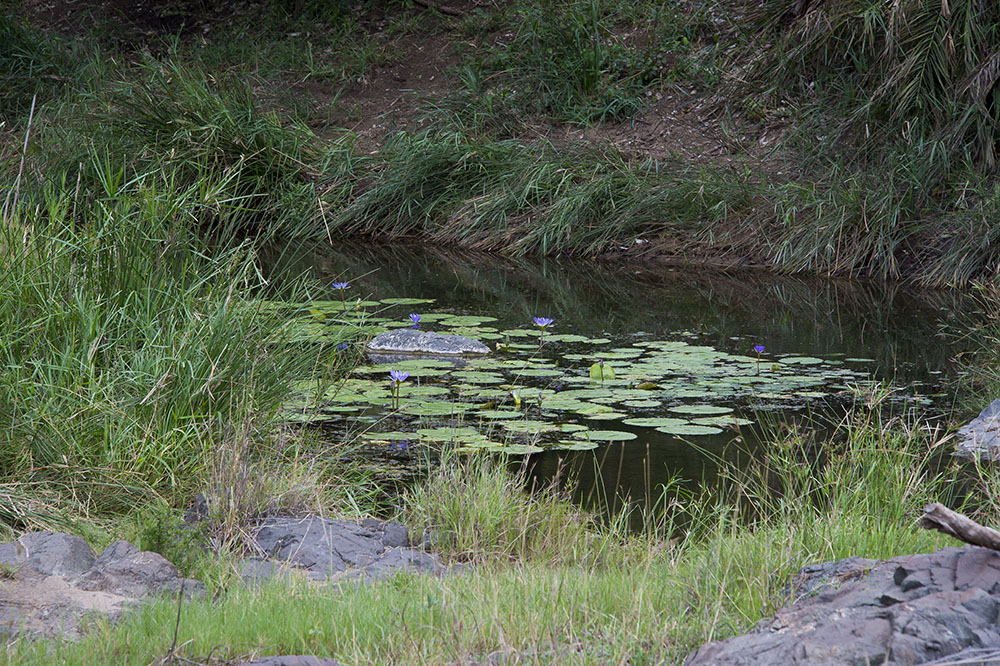
The riverbed itself is lined with brimming pools of water and there is no evidence of drought here as there is further south. It would seem that the rain in early October was very much confined to the Satara area.
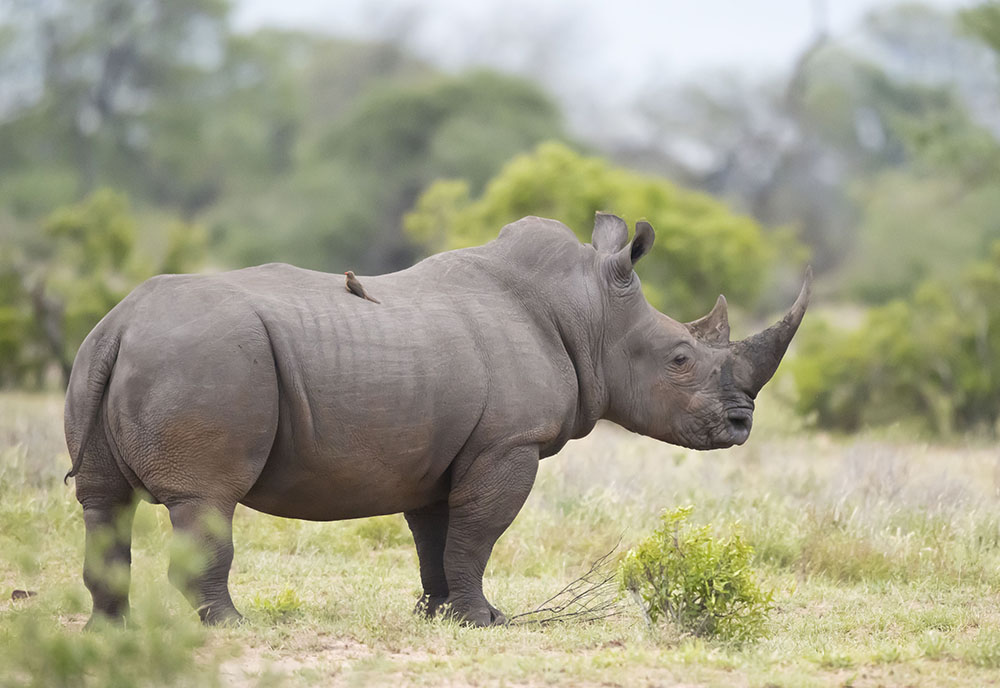
I see a lone white rhino and again I find its obvious nervousness distressing. I am sure that he would have a story to tell.
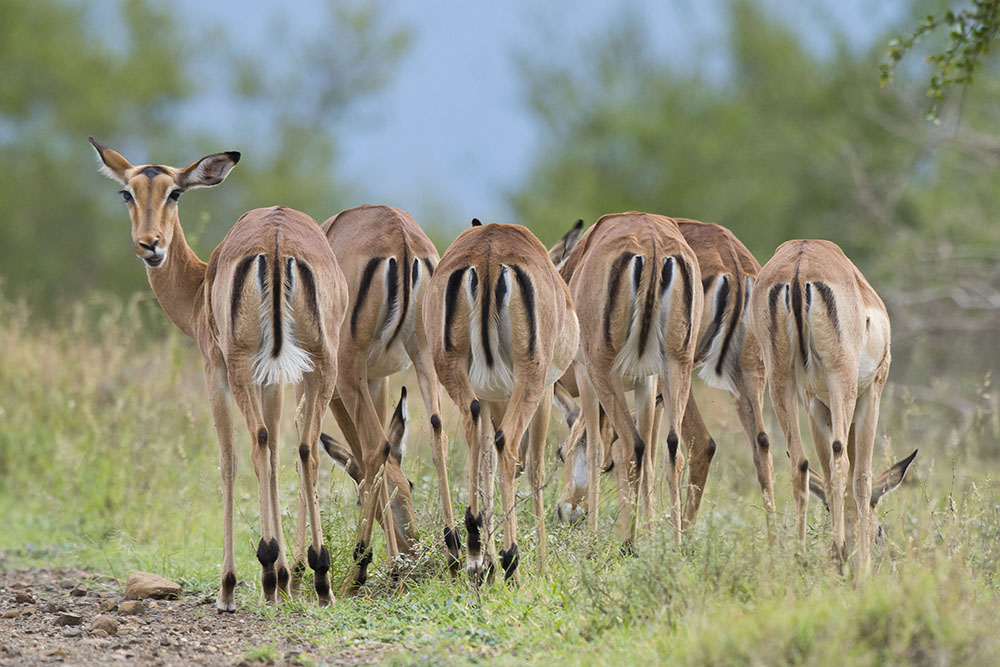

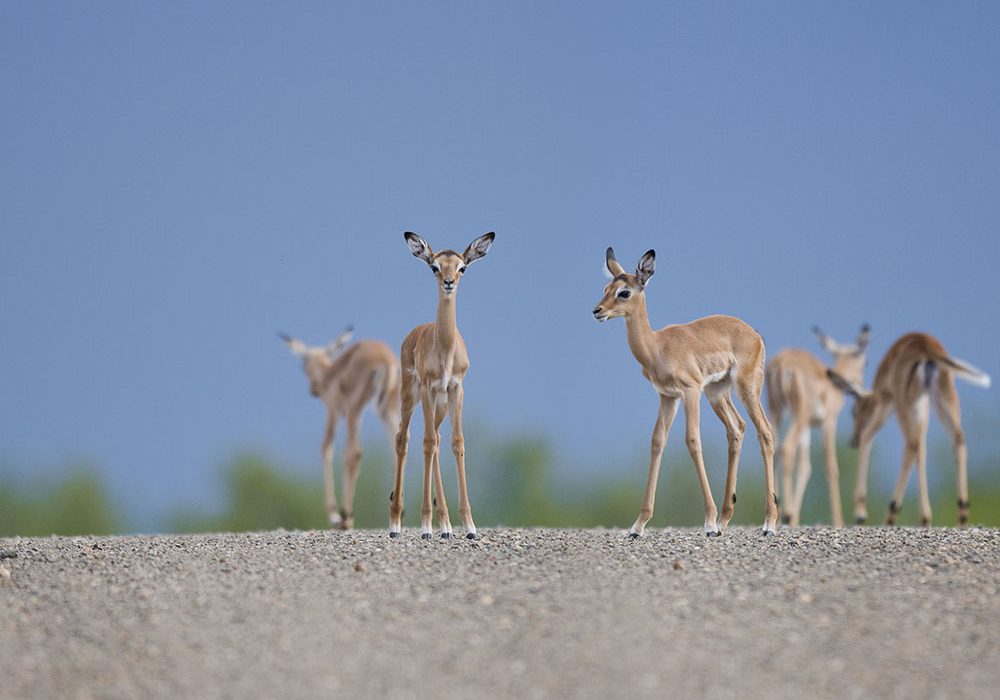
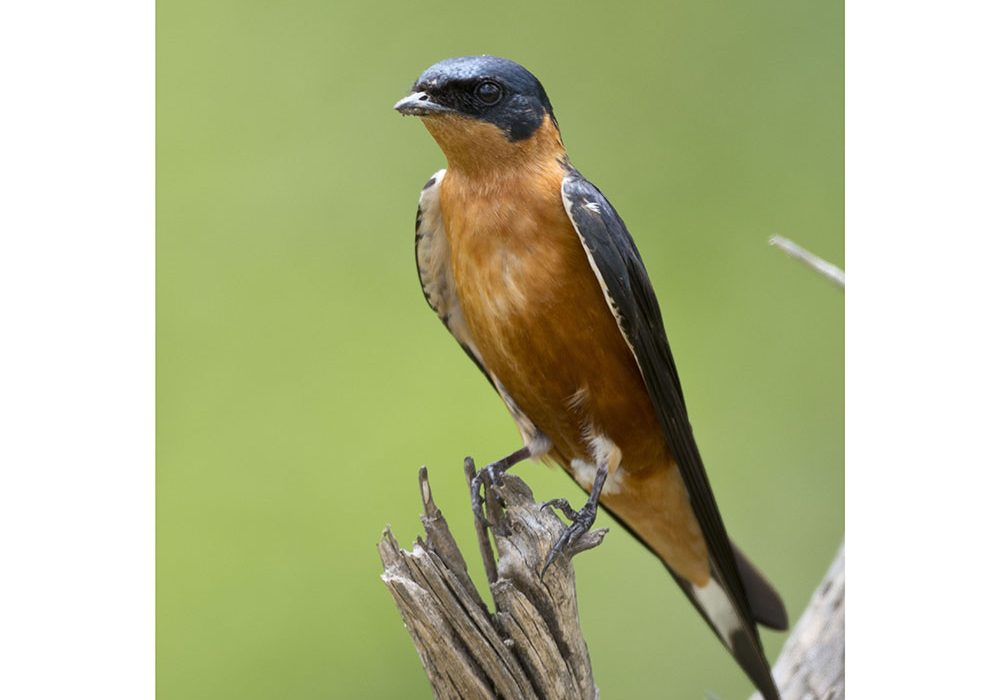
Thursday, 26th
It is dark and overcast with a light south wind blowing as we leave camp at 5.30am. Today we are heading for our old favourite – Sweni S126.
Whereas on Tuesday the Sweni area was dry and brown, today large pools of water lie at the side of the road and in the veld. It is evident that yesterday morning’s stormy downpour fell heavily in this area. Comb Ducks (why didn’t that keep to the name Knob-billed?) are always an indication of good rain and today we see many on the ponds that we pass.
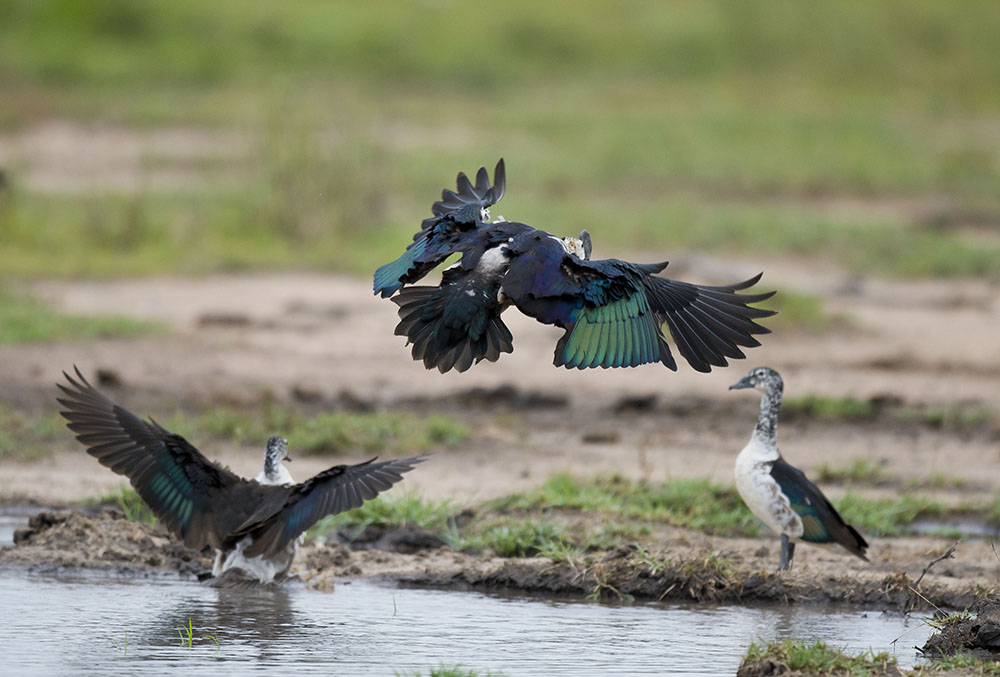
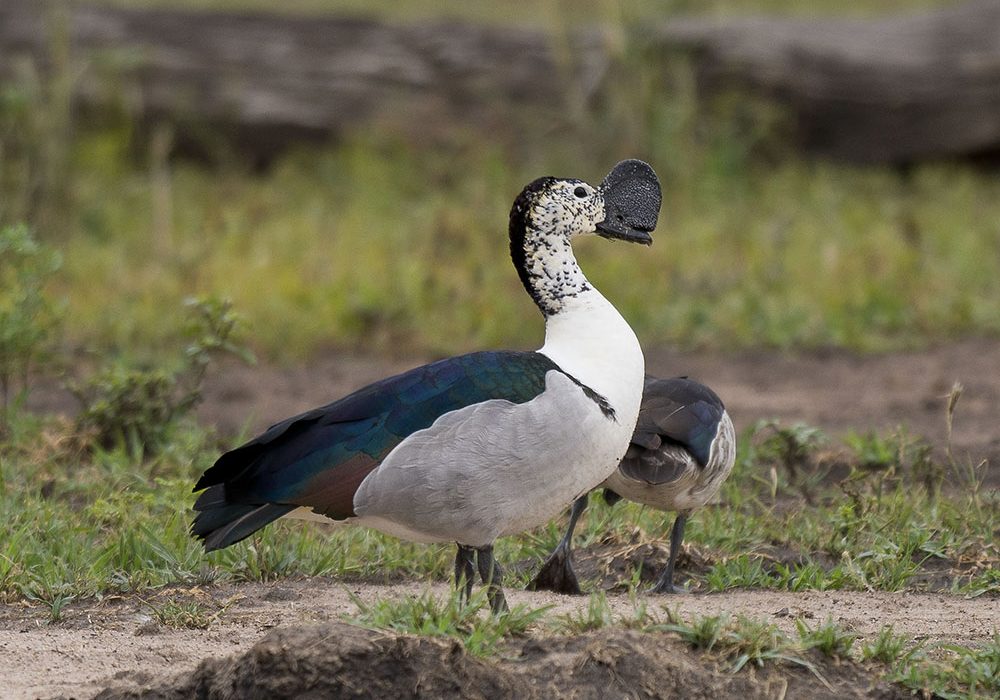
There are many zebra, impala, giraffe, kudu and wildebeest about but nothing unusual. The grass over the wide open areas has already turned bright green and it is as though we are driving through a well mown park.
The pool at the Welverdiend water point is overflowing but with water standing everywhere, there is nothing on show at this usually busy spot. After a quick breakfast we turn and retrace our stepd passing a pair of Saddle-billed Storks also attracted by the water.
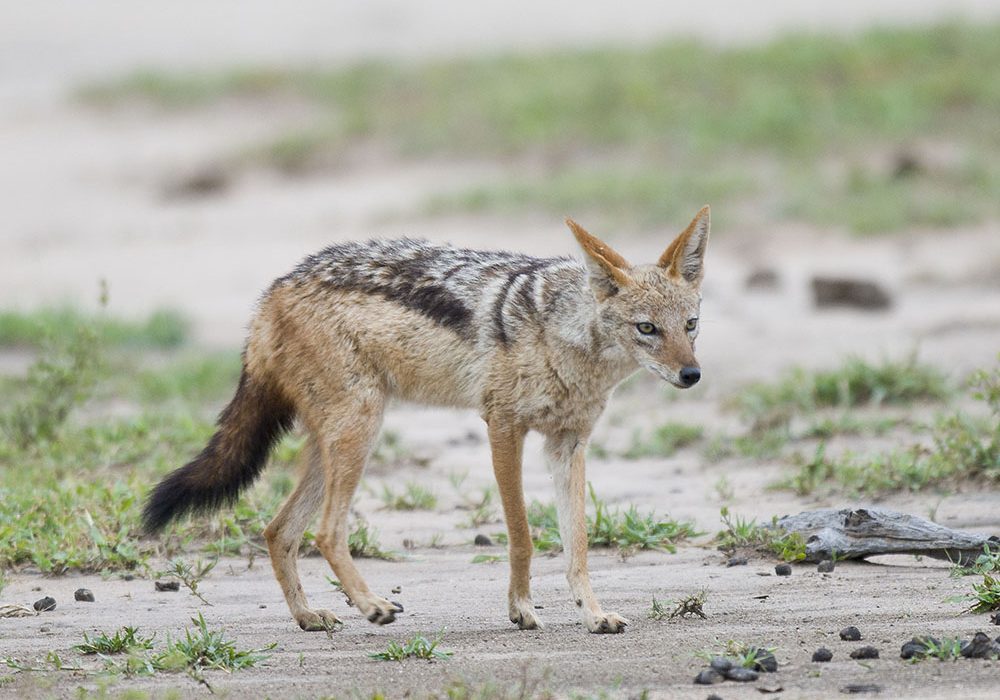
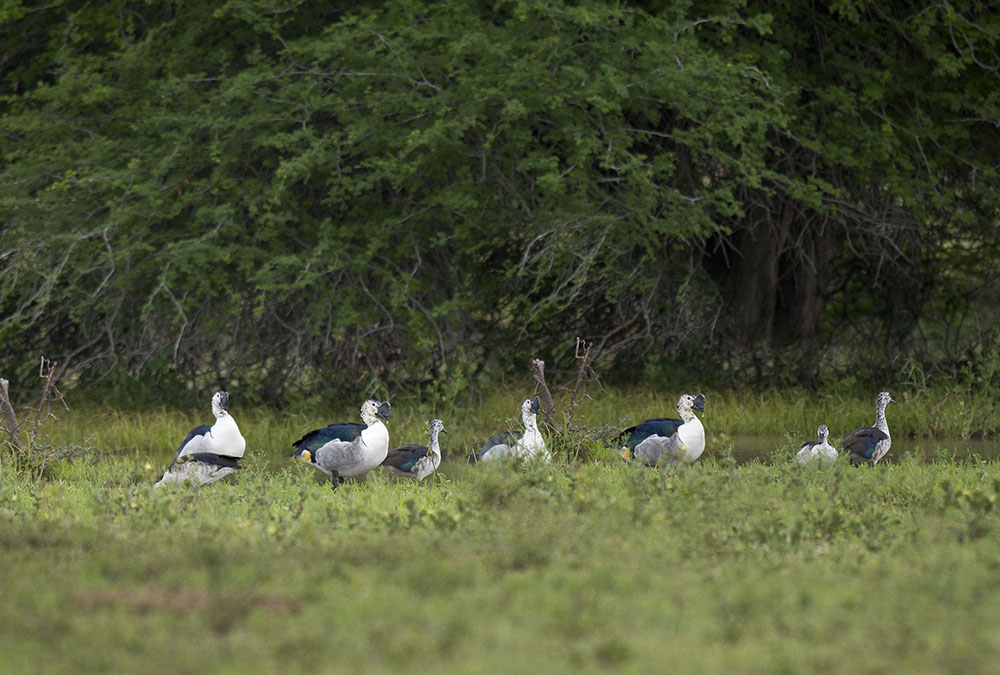
The sky opens up and we are treated to a glorious late afternoon. We head for Girivana Dam out west but find it empty with only a little mud. On the way there we come across a Great Spotted Cuckoo which takes off with a fat caterpillar in its bill and joins up with its mate in some bush.
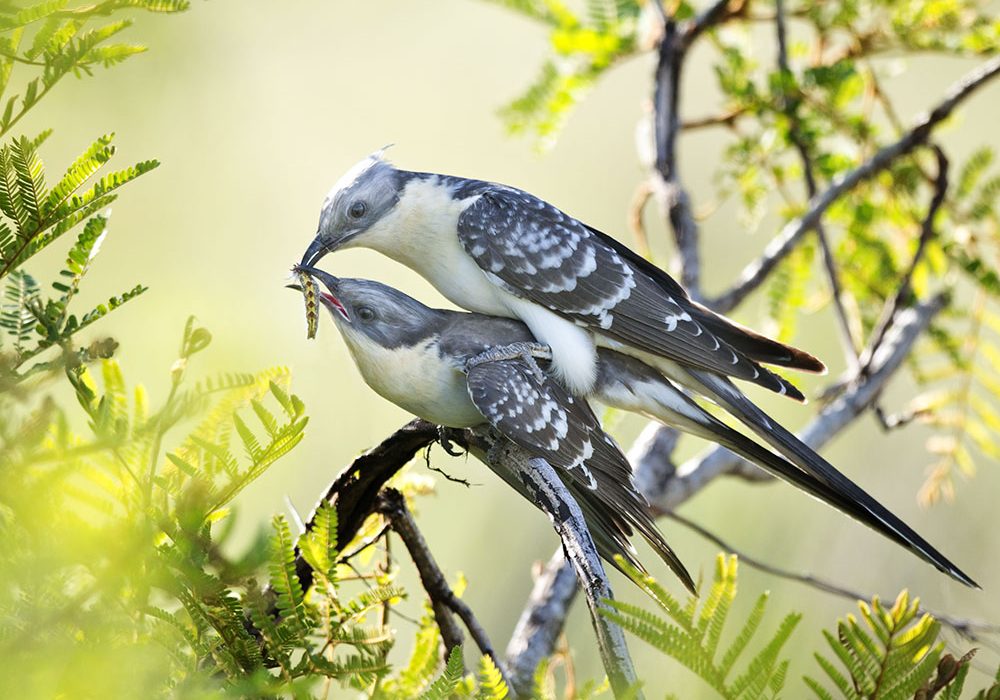
I have seen the Jacobin Cuckoos do this before whereby the male climbs onto the female’s back and feed her titbits – a sort of form of courtship. I suppose rather like taking your lady friend out to dinner. Most interesting.

We head back to Nsemani Dam, a splendid sight in the late afternoon sunlight.
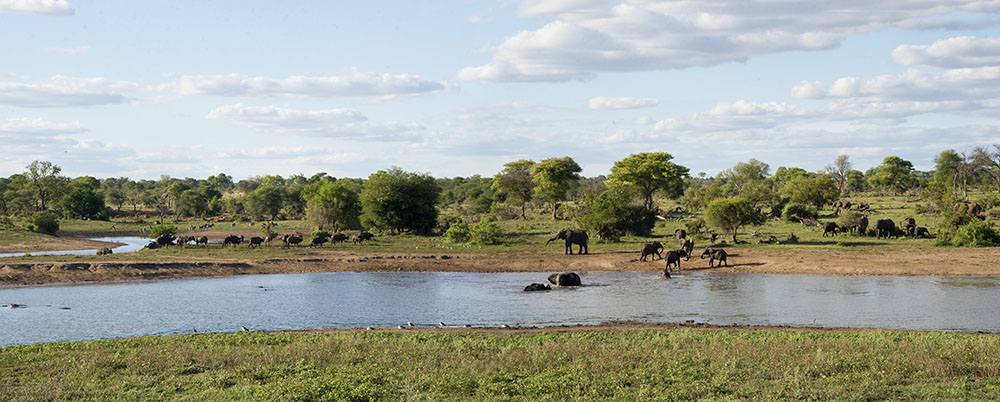
Far up near the top end of the dam a group of zebra are drinking at the water’s edge.
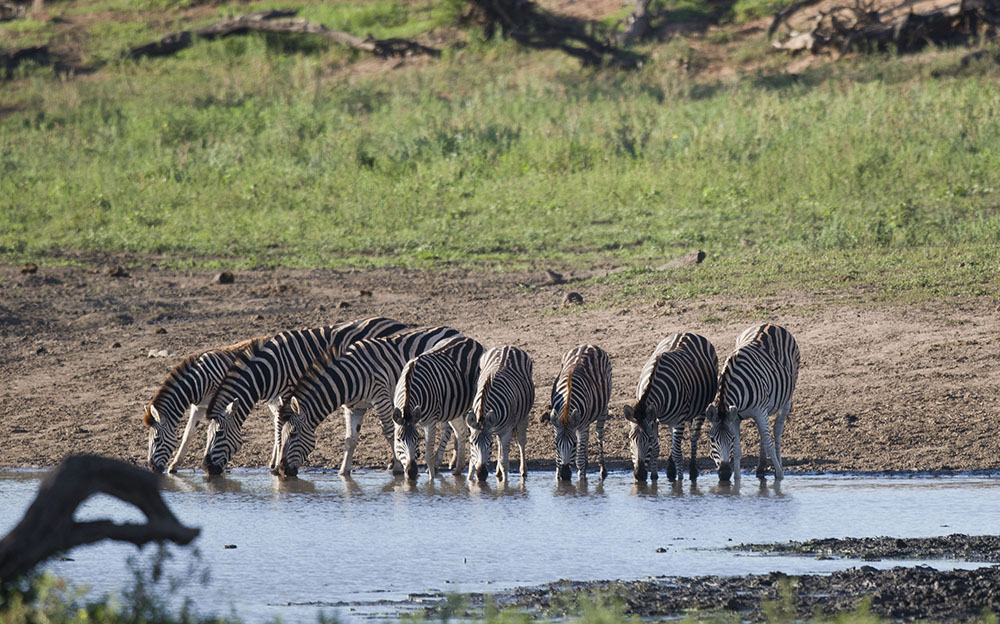
Suddenly a youngster is attacked by a croc and dragged into the water.
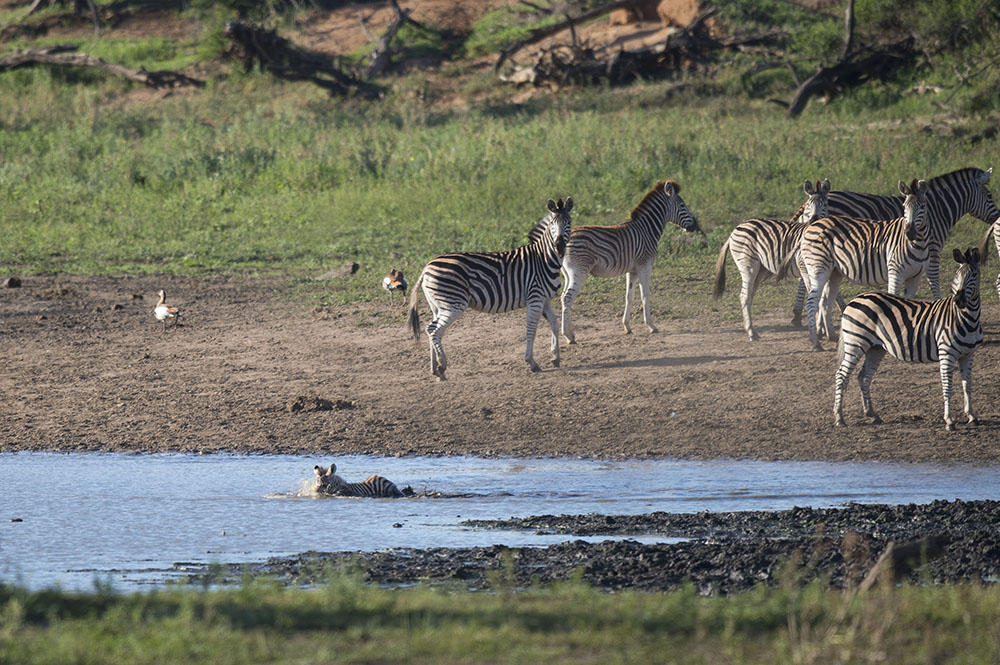
But I can only think that the croc was not big enough to deal with a zebra and the foal manages to struggle back to dry land.
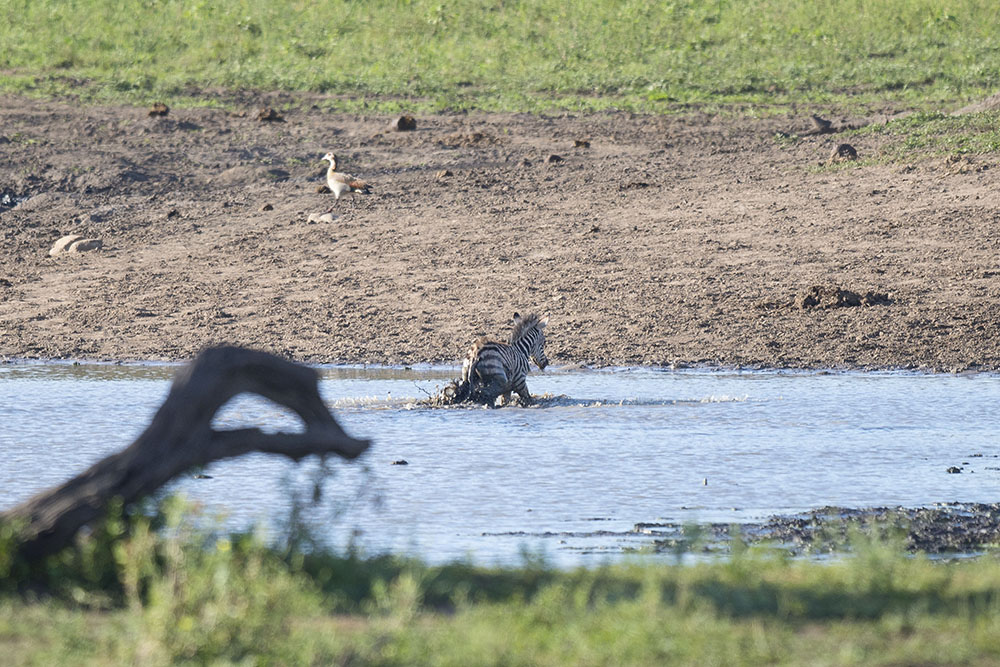
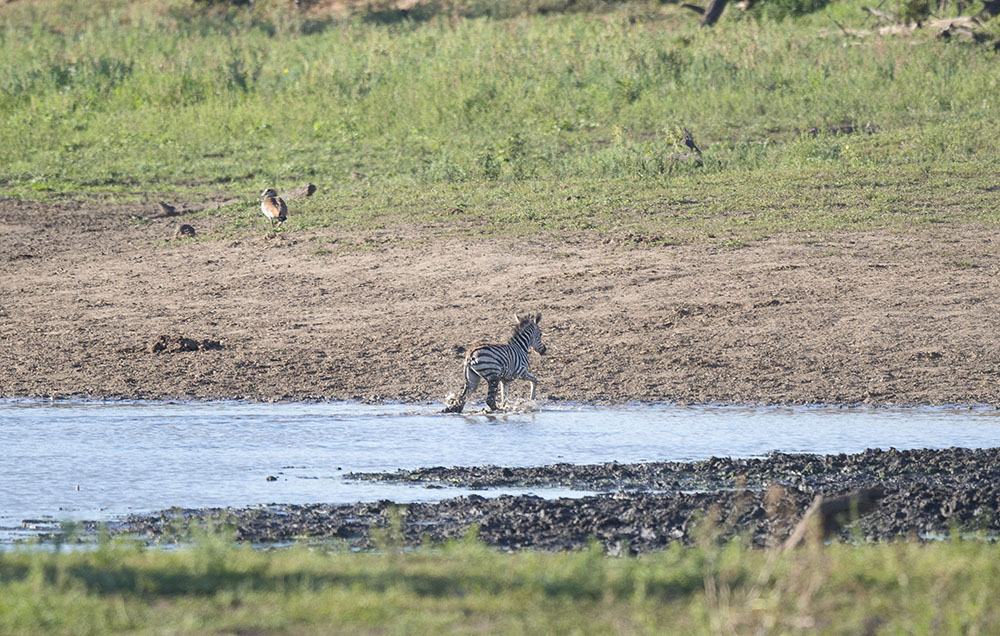
A herd of buffalo then take fright a come stampeding through the water.
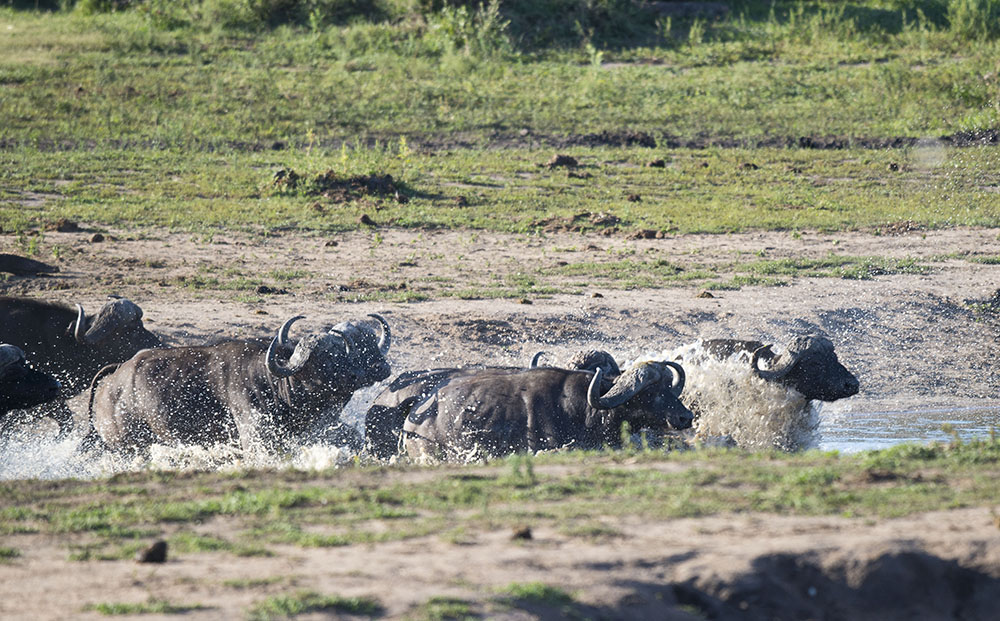
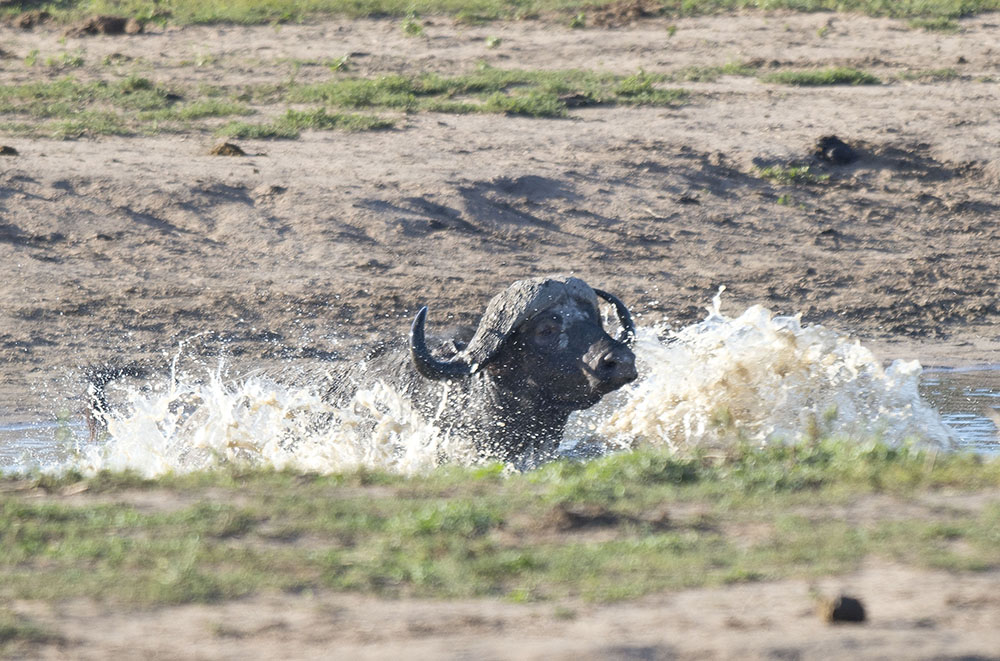
Of course the ellies again put on a most boisterous show with much trumpering and splashing as they enjoy their swim.
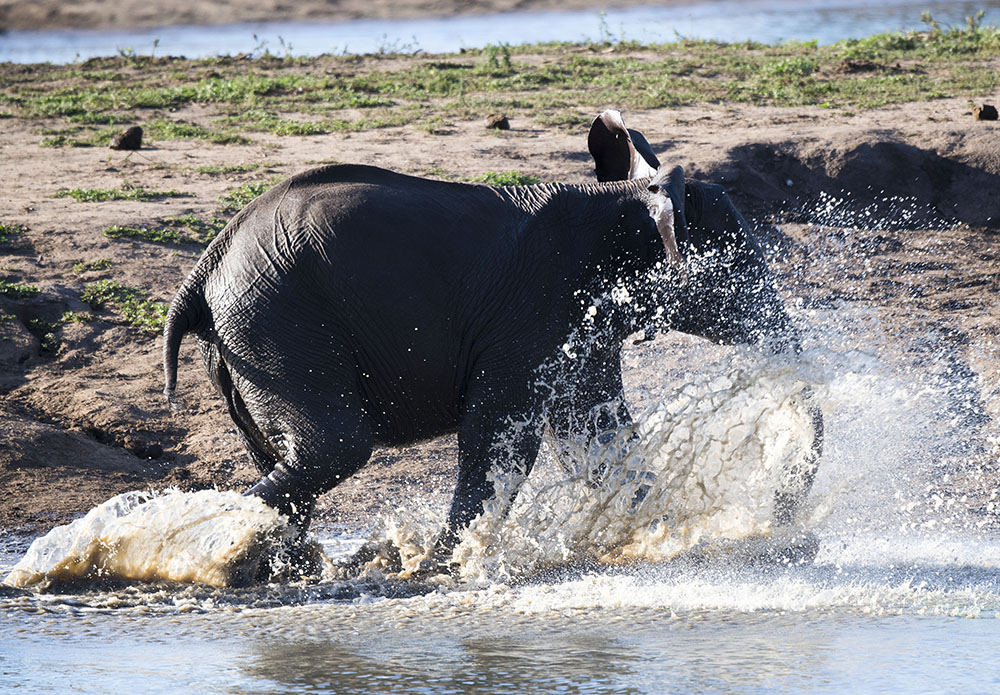
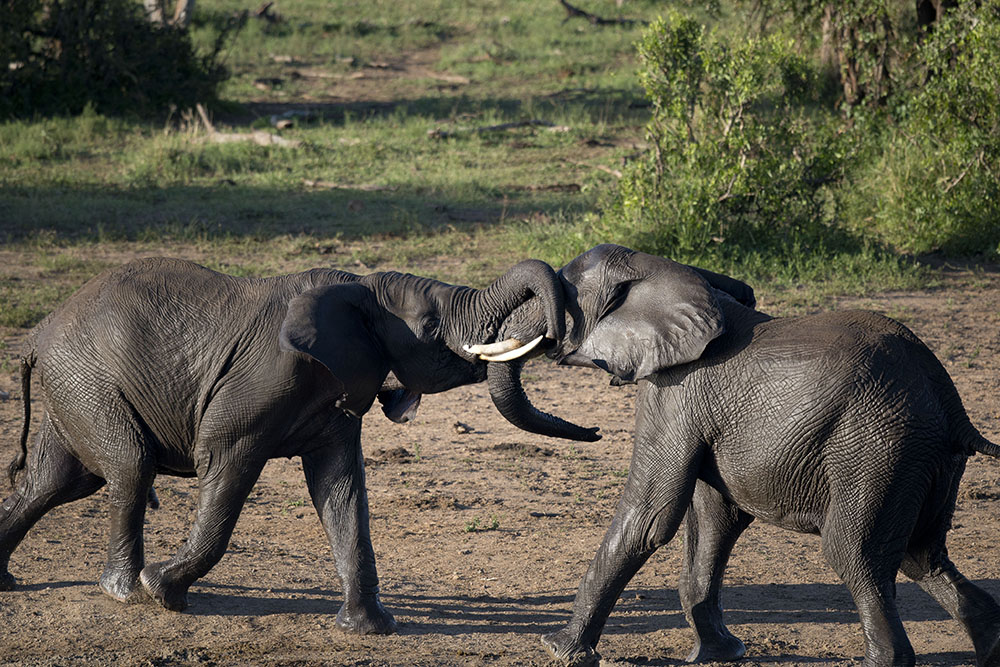
The hippos remain very inconspicuous whilst the ellies are around but once the latter have disappeared, they begin performing too.
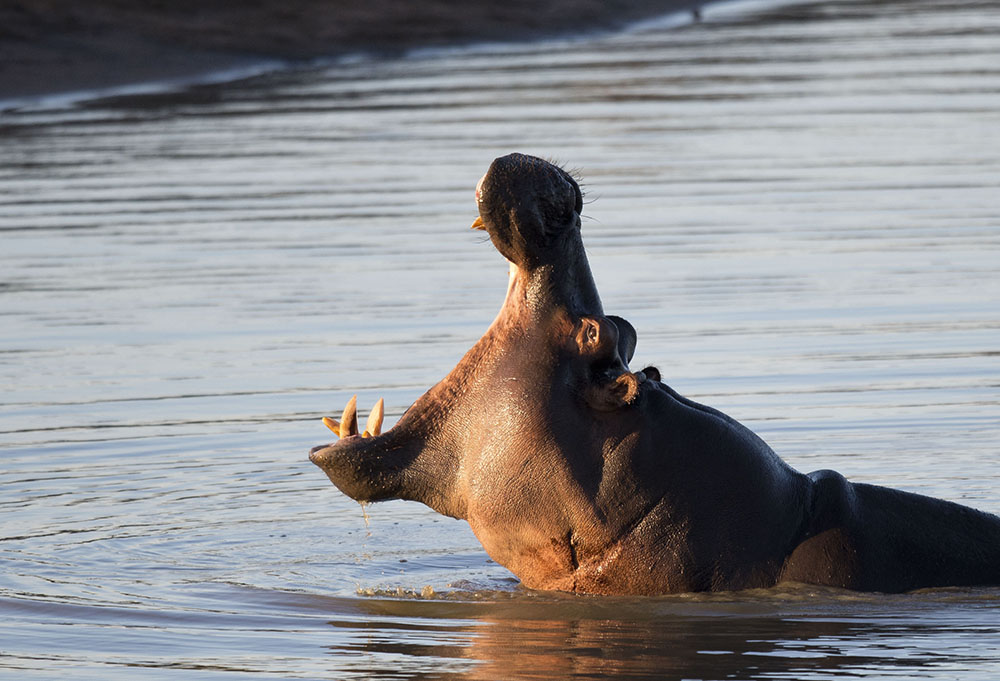
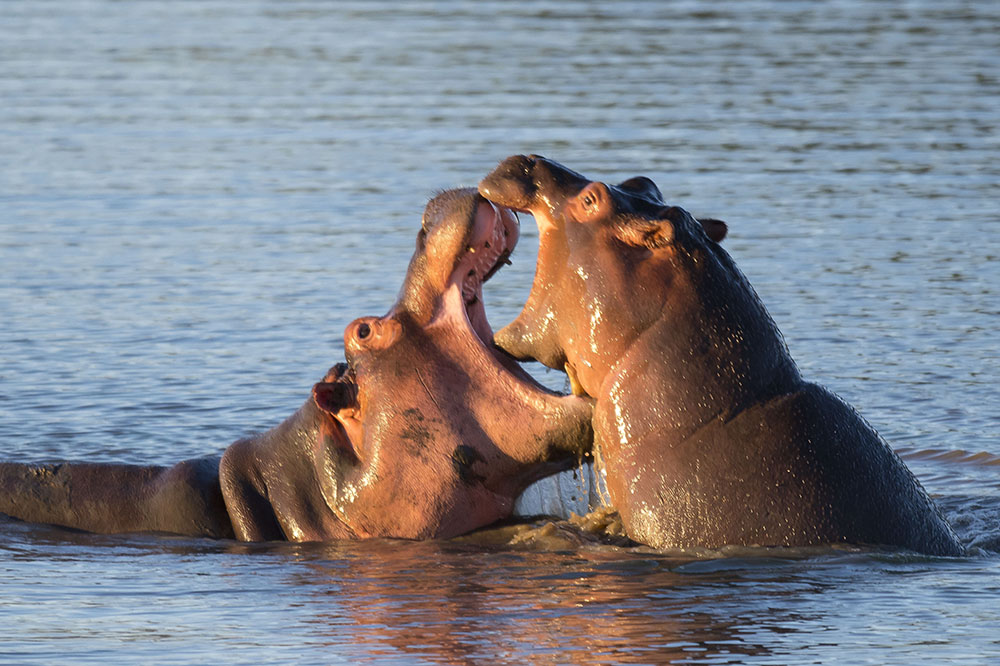
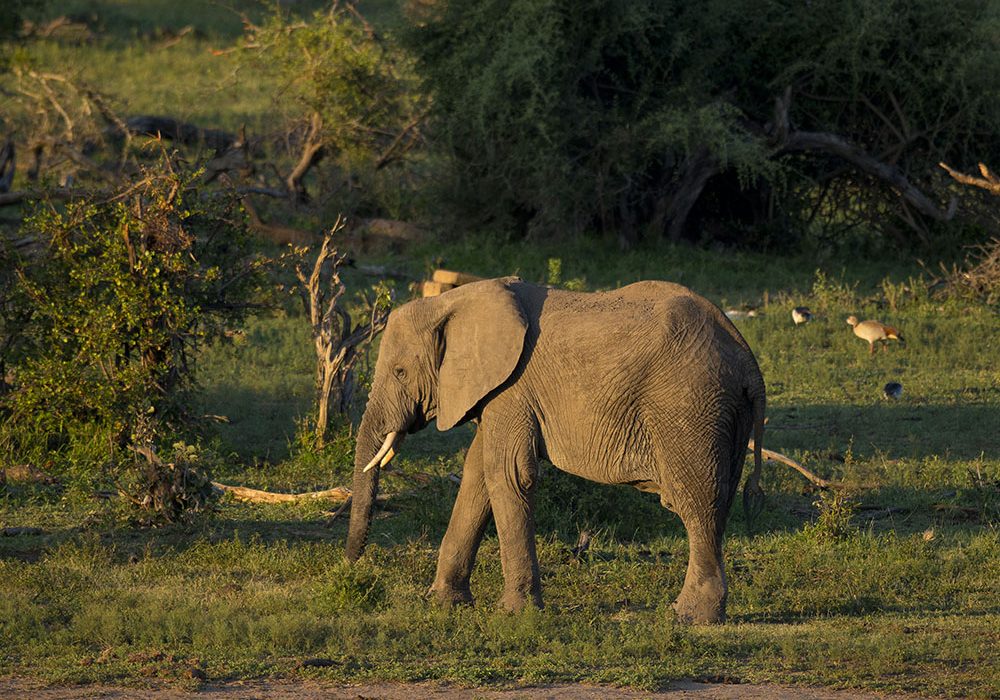
Back in camp, our supper is interrupted by two African Wildcats having a noisy brawl under our vehicle. These Wildcats are very much a feature of Satara camp.

